Improving internal communication at work involves fresh ideas and the right tools. Read along as we break down 10 key ways (with examples) to improve internal communications at your company.
Recent research from HR Brew found that employees are more unhappy and disengaged today than they were at the height of the COVID-19 pandemic. Let that sink in.
For many communicators, connecting with employees amid tension, hiring freezes, and other uncertainties is a notable challenge. Employees are worried about what tomorrow might bring, and clear and consistent communication is part of the solution. This is why a renewed focus on foundational internal communications is so important—it cuts through uncertainty.
Read along as we detail how to improve internal communication in your company, drawing upon real-world internal communication strategy examples that can be rolled out today. From proven tactics to up-and-coming internal communication trends, these 10 strategies will deliver improved internal comms and a fresh sense of purpose.
Book a demo to see how ContactMonkey’s internal communication solutions can help you improve communication and employee engagement.
Take a self-guided tour of ContactMonkey
See how our key features can streamline your internal communications.
Take product tour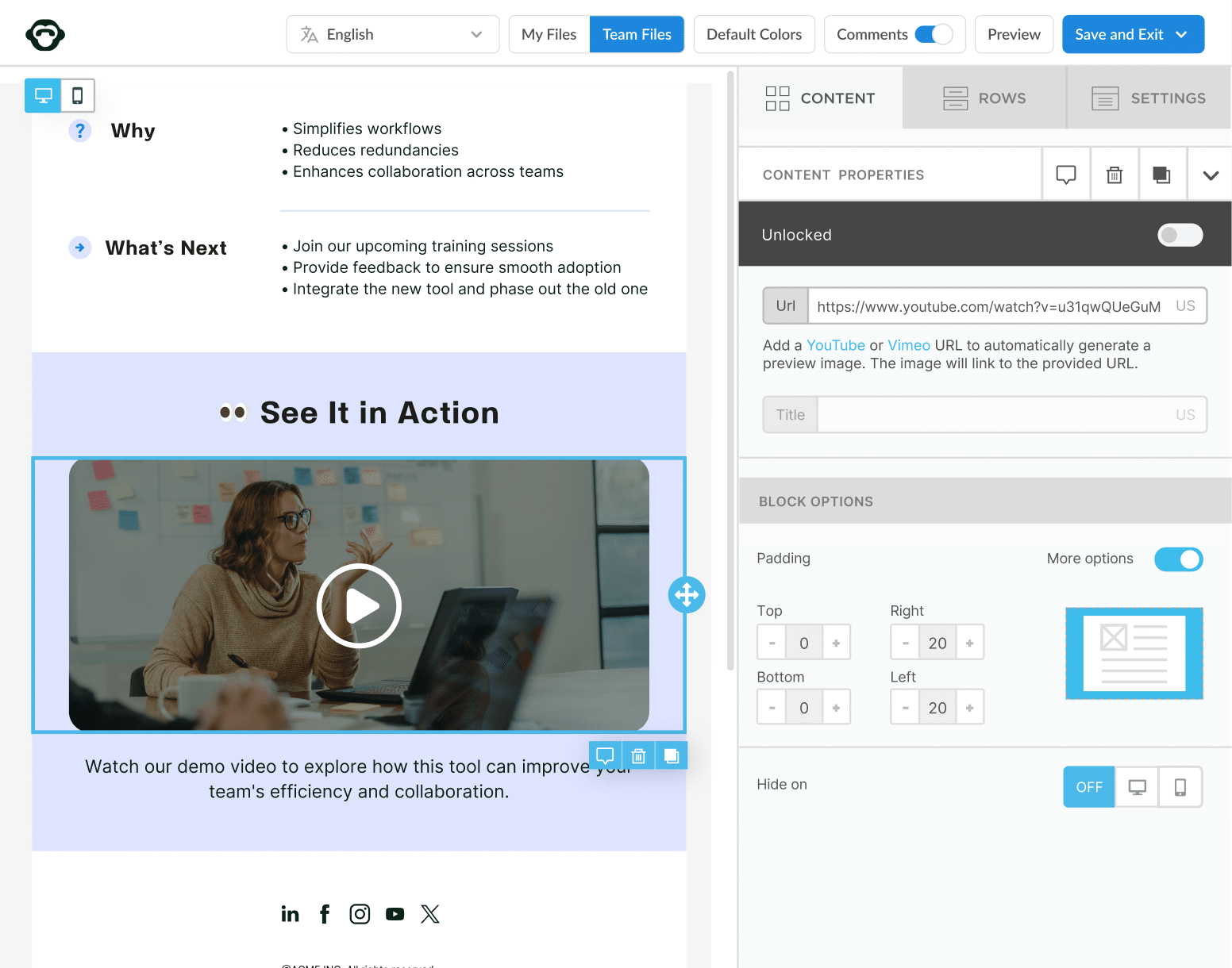
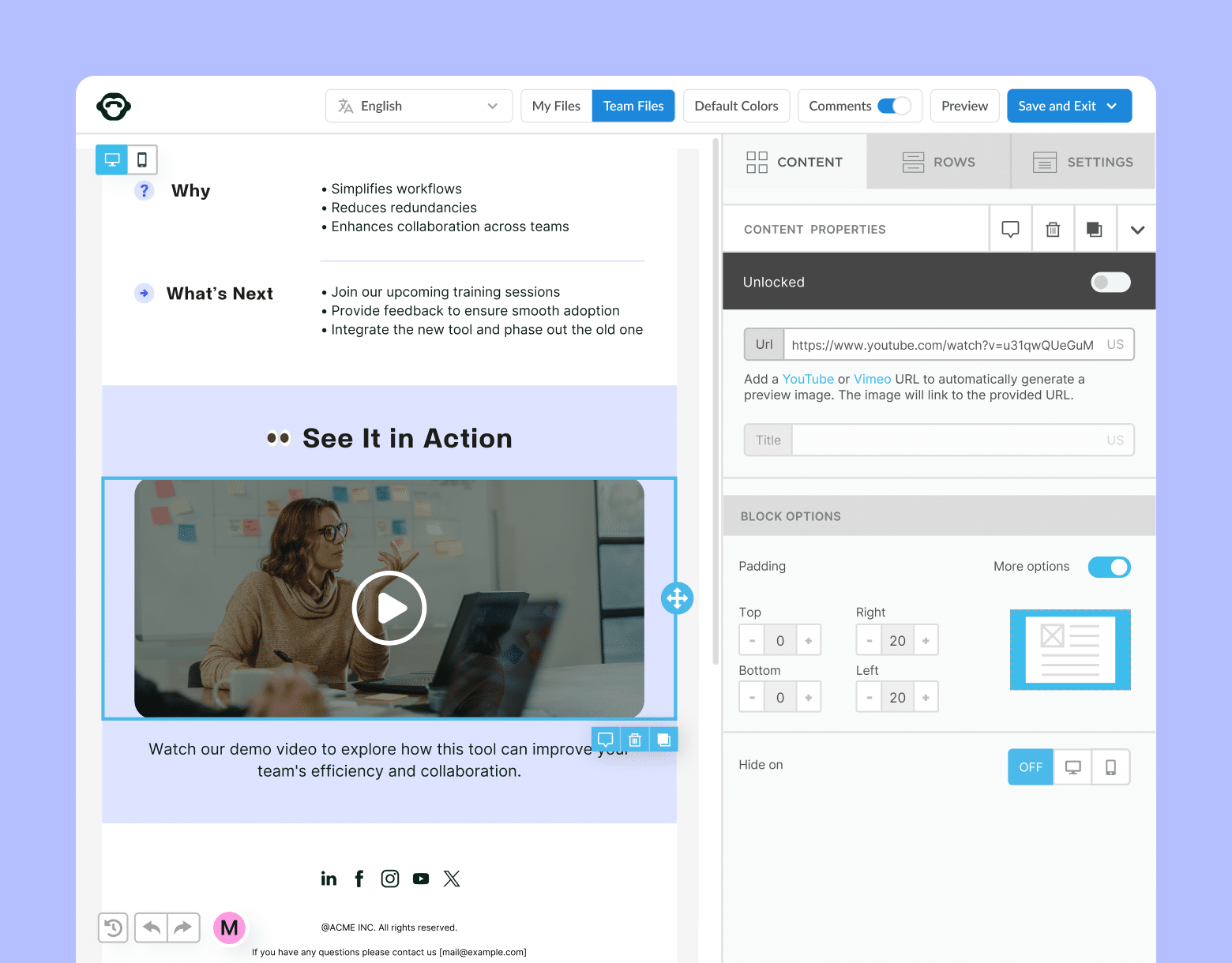
1. Develop a clear internal communication plan
Every organization, regardless of size, needs a structured framework to ensure that internal communications are relevant, timely, and consistent.
Why it’s important: If you’re exploring how to improve internal communication in a company, a formal internal communication plan acts as a roadmap. It sets objectives, outlines timelines, and helps standardize messaging so employees know what to expect.
Benefits:
- Aligned goals: Everyone works toward the same targets.
- Consistent messaging: Reduces misinformation and confusion.
- Measurable progress: Track metrics (like open rates or feedback scores) to see what resonates.
Examples of how to improve internal communications:
- Create a unified calendar: Schedule company updates, newsletters, and departmental announcements in one place.
- Set clear objectives: Aim for a specific engagement rate, such as the number of employees who respond to surveys over a specific period of time.
- Involve stakeholders: Gather input from HR, marketing, and department heads to refine messages.
PRO TIP
To truly improve internal communication in a company, platforms like ContactMonkey help you automate and personalize email newsletters. Real-time analytics features show you exactly how to improve internal communication by highlighting the topics that generate the most engagement.
2. Encourage employee feedback with active listening
Active listening doesn’t end with hearing employees speak. It involves truly absorbing their perspectives and engaging with their concerns in a meaningful way.
Why it’s important: Remember that communication is a two-way street. Employees who feel heard are more willing to share ideas, voice concerns, and contribute to organizational growth.
Benefits:
- Higher morale: Employees sense their opinions matter.
- Better problem-solving: Feedback highlights issues you might have overlooked.
- Stronger trust: Open, honest discussions build credibility for leadership.
Examples of how to improve internal communications:
- Anonymous surveys: Gather genuine insights without fear of judgment.
- Open-forum Q&As: Hold monthly sessions where leadership addresses questions directly.
- Dedicated feedback channels: Use Slack or Teams channels for real-time idea sharing.
PRO TIP
Use ContactMonkey to embed quick polls or ratings into emails through our employee feedback features. By monitoring these responses, you’ll discover how to improve internal communication in an organization based on employee sentiment.
Modern internal comms and measurement tools
No design or technical expertise needed. Save time, increase engagement, and dazzle your employees with fun and interactive communications.
Explore all features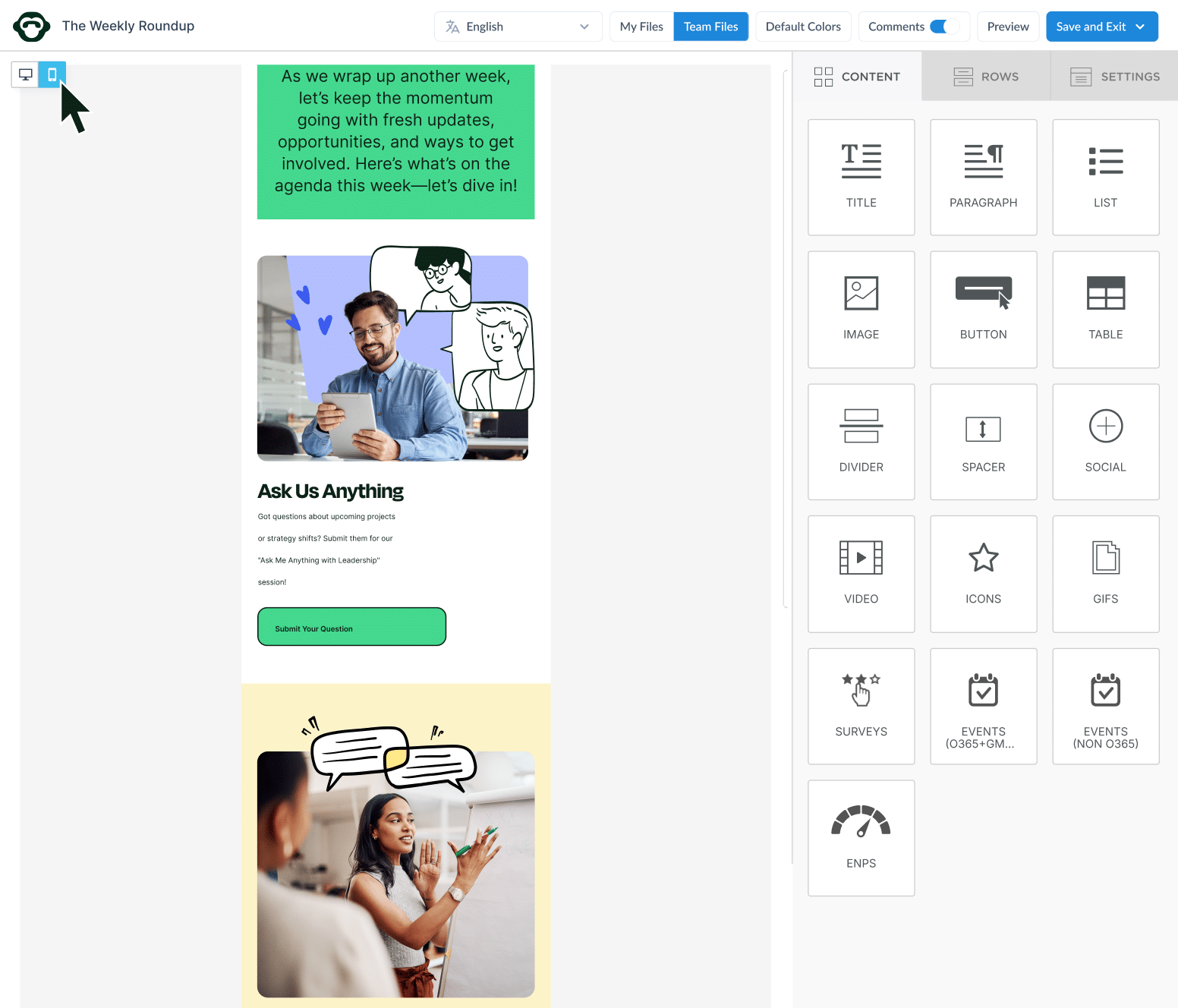
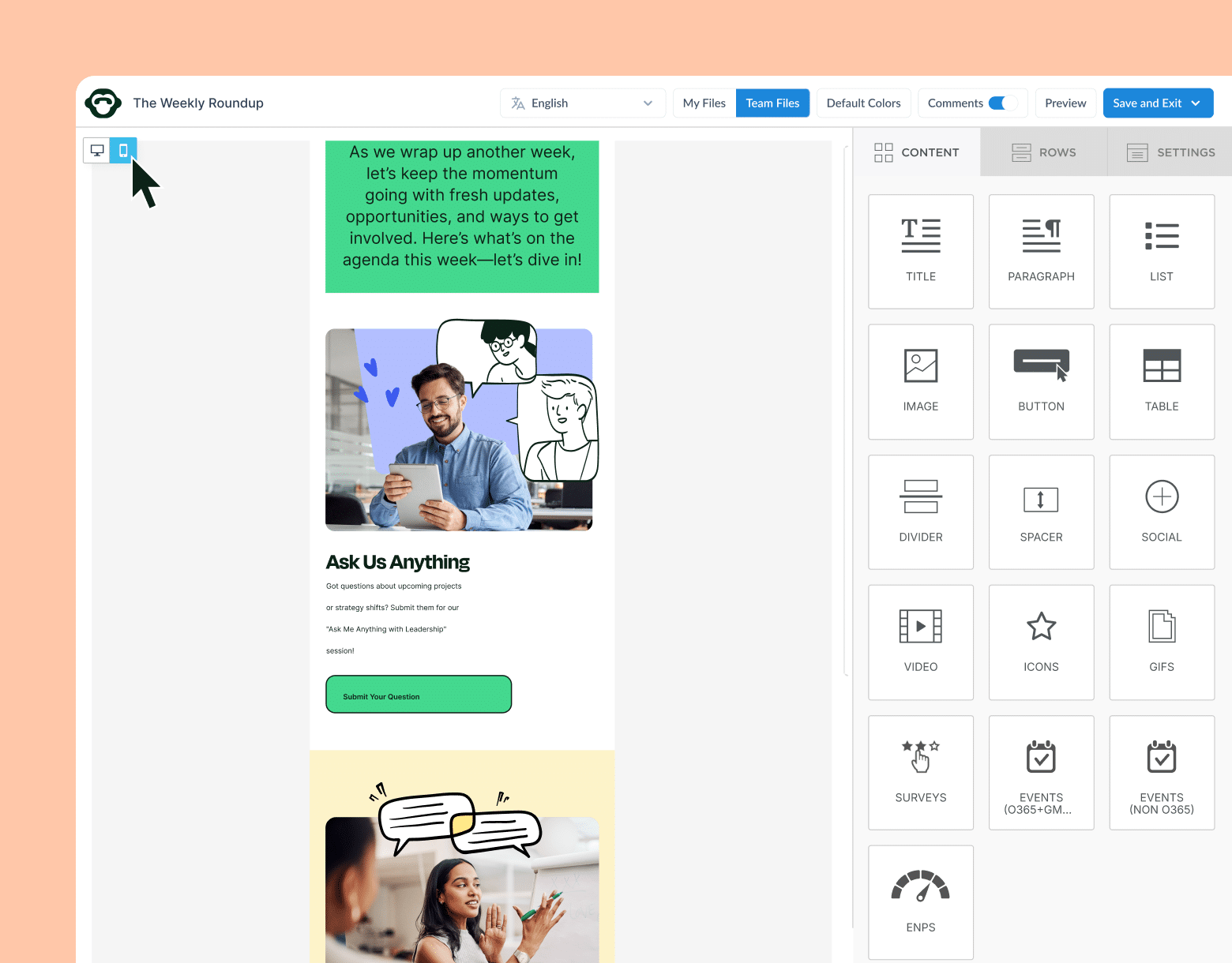
3. Use multiple communication methods
Different platforms—email, chat apps, video calls—cater to different working styles and needs. They also support various modes of communication, all of which have an ideal time and place.
Why it’s important: If your goal is to improve internal communication, diversifying channels ensures that messages reach remote workers, deskless employees, and office staff alike.
Benefits:
- Greater reach: Meet employees where they are, whether that’s on a smartphone or desktop.
- Faster responses: Time-sensitive updates can go out via instant messaging or SMS.
- Reduced overload: Balancing communications across platforms prevents email clutter.
Examples of how to improve internal communications:
- Company-wide standups: Hold short daily or weekly video calls for urgent news.
- Mobile apps: Provide push notifications to frontline employees or those who travel frequently.
- Social intranets: Create a hub for team discussions, document sharing, and announcements.
PRO TIP
By integrating multiple channels within ContactMonkey’s internal communication software (including email and SMS communications) you can track open rates and engagement across different mediums—helping you see how to improve internal communication at work more holistically.
4. Streamline and standardize key communication channels
Choosing a few of the right internal communication tools can help you avoid adopting too many apps that can confuse employees and scatter important updates.
Why it’s important: Experts who have answered the question of “How to improve internal communication between departments” often find that fewer, more consistent channels lead to clearer messaging.
Benefits:
- Clarity: Employees know exactly where to look for specific information.
- Efficiency: Less time spent searching multiple platforms or sifting through clutter.
- Consistency: A unified brand voice across all company communications.
Examples of how to improve internal communications:
- Limit platform choices: Decide which tools handle chat vs. long-form updates.
- Department channels: Keep department conversations in designated digital spaces.
- Single source of truth: Use one repository (like SharePoint or an intranet) for key documents.
PRO TIP
ContactMonkey offers a seamless Outlook and Gmail integration. By standardizing on one solution, you improve internal communication while simplifying how employees receive and respond to updates.
Further reading: Learn how to create an internal communication channel matrix, to keep you organized and on track strategically.
Watch ContactMonkey LIVE in action
Join live demo
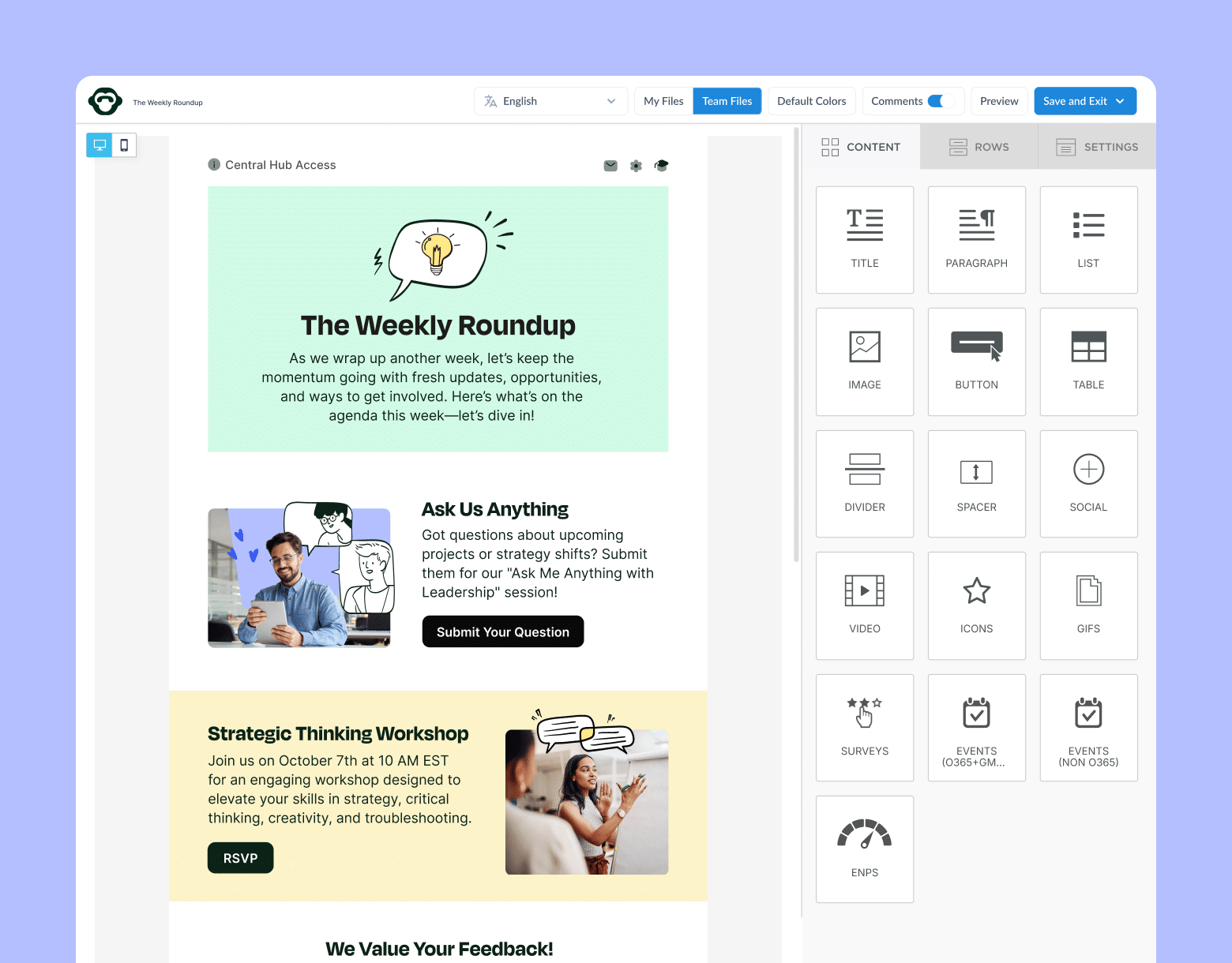
5. Recognize and celebrate employees
Never underestimate the power of a simple “thank you” or a company-wide spotlight on a job well done. Instead of one-of-thank-yous, bake in ways for continual positive accolades across departments and seniority.
Why it’s important: Recognition fosters motivation and loyalty, making employees more likely to participate in and trust the communication process.
Benefits:
- Boosted morale: Celebrations and shout-outs create positive energy.
- Higher engagement: Recognized employees are more invested in organizational goals.
- Team spirit: Public praise encourages peer-to-peer support and collaboration.
Examples of how to improve internal communications:
- Employee spotlights: Feature a different team member in each weekly newsletter.
- Peer recognition: Create a platform where staff can nominate each other for going above and beyond.
- Milestone alerts: Send automated emails celebrating work anniversaries or project completions.
PRO TIP
Thanks to our template builder, you can easily design eye-catching recognition emails or employee newsletters using ContactMonkey. Seeing internal communication examples in action—like high open rates on recognition-focused content—demonstrates exactly how to improve internal communication by celebrating your people.
6. Foster cross-department collaboration
Breaking down silos ensures that knowledge flows freely, sparking innovation and camaraderie. Greater interdepartmental communication also helps employees feel part of the larger goal and company mission.
Why it’s important: If you’re looking to improve internal communication between departments, facilitating collaboration is key. It allows teams to share resources and ideas, reducing bottlenecks.
Benefits:
- Shared insights: Different skill sets tackle issues from diverse angles.
- Enhanced innovation: Fresh perspectives can lead to breakthrough solutions.
- Efficient processes: Avoid duplicated efforts or conflicting processes across teams.
Examples of how to improve internal communications:
- Cross-functional projects: Assign team members from various departments to solve specific challenges.
- Rotational programs: Let employees spend time in different roles for a broader perspective.
- Company hackathons: Host creative brainstorming sessions that encourage interdepartmental teamwork.
PRO TIP
Through the list management feature, use ContactMonkey to segment email campaigns by department or project group. Tracking engagement across teams provides insight into how to improve internal communication in a company and helps tailor messages accordingly.
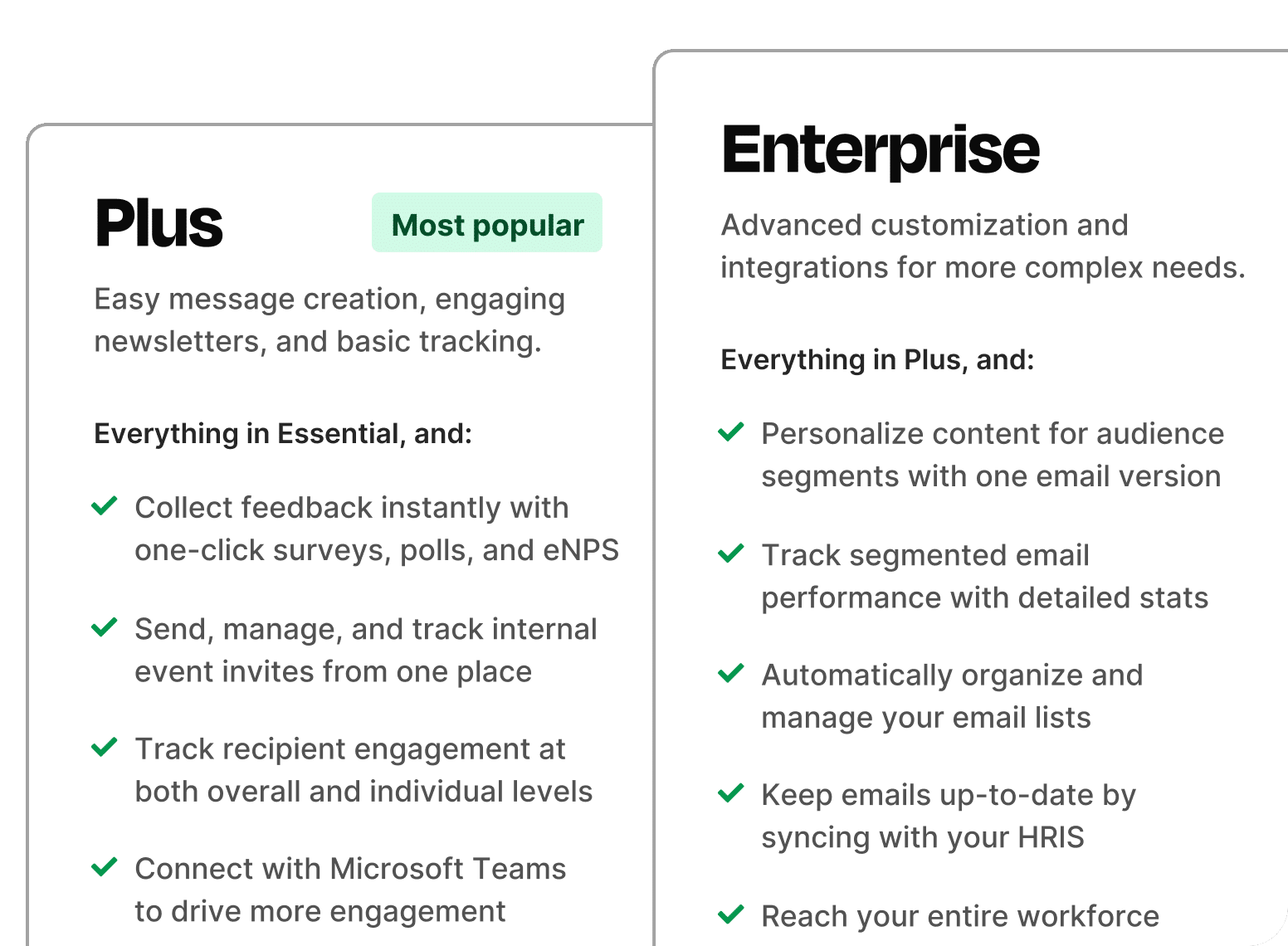
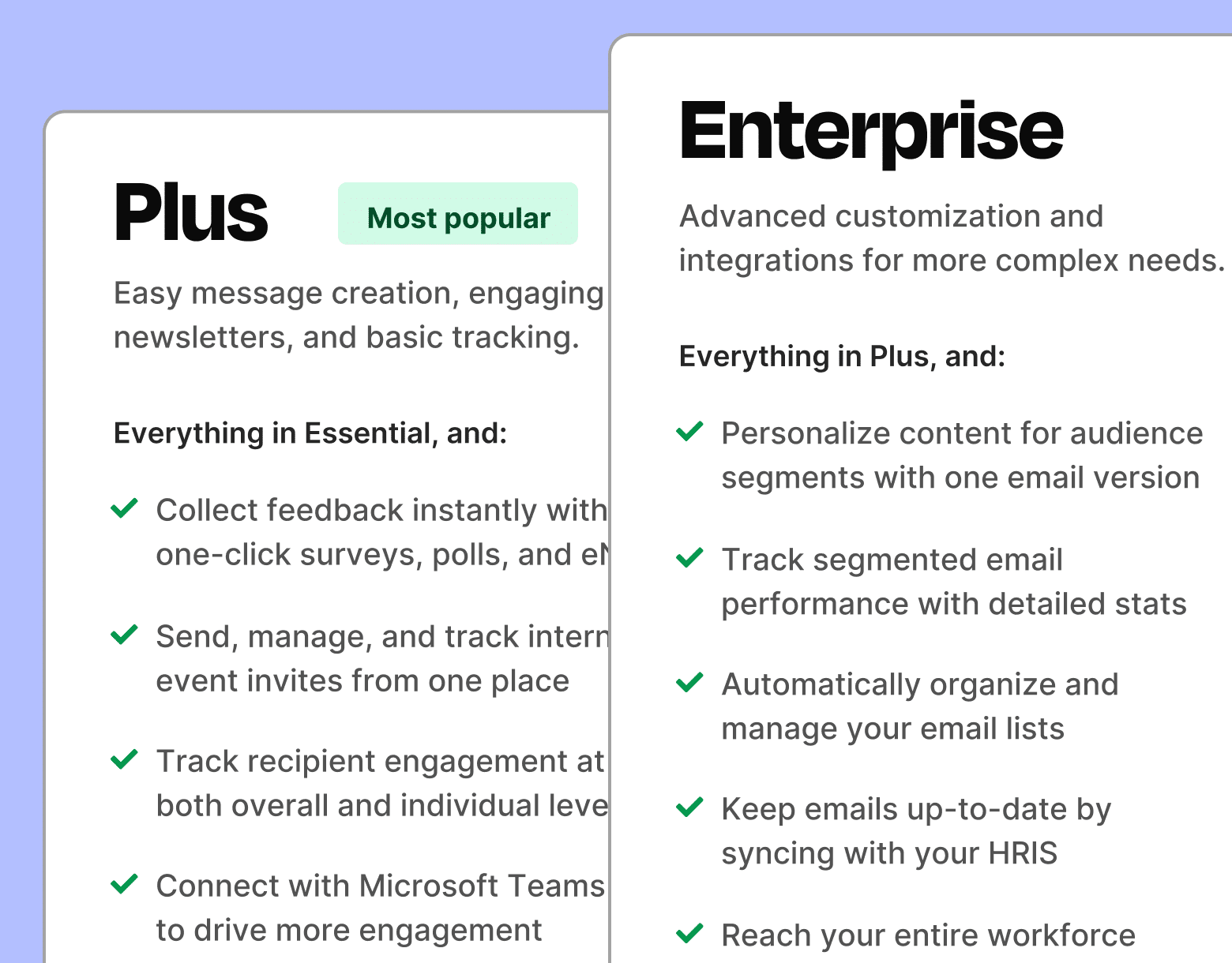
7. Schedule regular meetings—but keep them efficient
Meetings are key touchpoints but can quickly eat into productivity if not managed properly. Avoid becoming a meeting-heavy workplace by creating parameters.
Why it’s important: Balanced meeting schedules are among the top internal communication ideas. A consistent yet concise meeting rhythm can unify teams without overwhelming them.
Benefits:
- Real-time updates: Everyone hears the same information simultaneously.
- Immediate clarification: Questions and concerns get resolved on the spot.
- Relationship building: Face-to-face or virtual discussions help team members connect personally.
Examples of how to improve internal communications:
- Weekly standups: Limit these to quick updates and immediate challenges.
- Monthly town halls: Let executives share big-picture goals or organizational changes.
- One-on-one check-ins: Provide a private forum for personal and professional feedback.
PRO TIP
Post-meeting follow-ups via ContactMonkey can summarize key takeaways. Consider adding a short pulse survey (and, use these pulse survey design tips to support) to gauge clarity, helping you understand how to improve internal communication in an organization by pinpointing gaps in understanding.
8. Provide constructive, ongoing feedback
Feedback shouldn’t be a once-a-year exercise; continuous guidance helps employees grow faster.
Why it’s important: If your leadership team is searching for how to improve internal communication, remember that regular feedback keeps employees engaged and reduces surprises in performance reviews.
Benefits:
- Faster skill development: Employees can course-correct in real-time.
- Increased motivation: Knowing their work is noticed—positively or constructively—drives effort.
- A culture of trust: Openness and honesty foster respect between managers and staff.
Examples of how to improve internal communications:
- Real-time feedback apps: Integrate tools that allow quick “thumbs-up” or brief notes on task performance.
- Project debriefs: After major milestones, gather feedback on what went well and what could improve.
- Praise in public, correct in private: Maintain a culture of respect and understanding.
PRO TIP
Email-based pulse surveys via ContactMonkey help you gather insights on employee performance and satisfaction, offering tangible data on how to improve internal communication to meet their developmental needs.
Take a self-guided tour of ContactMonkey
See how our key features can streamline your internal communications.
Take product tour

9. Cultivate an inclusive and positive culture
A supportive environment ensures everyone feels comfortable sharing ideas and engaging with updates.
Why it’s important: Inclusivity is the glue that holds teams together. When people feel valued, they’re more likely to speak up and stay engaged.
Benefits:
- Higher retention: Employees remain loyal when they feel respected and heard.
- Enhanced collaboration: Diverse viewpoints spur creativity and adaptability.
- Strong employer brand: A reputation for inclusivity attracts top talent.
Examples of how to improve internal communications:
- Employee resource groups: Offer safe spaces for underrepresented voices.
- Diversity training: Equip leaders and teams to recognize and value different perspectives.
- Open door policies: Encourage candid conversations, regardless of rank or department.
PRO TIP
Showcase stories of diverse employee experiences in your ContactMonkey newsletters. Tracking high click-through rates on these stories can reveal how to improve internal communication between departments and create a more empathetic workplace culture.
10. Leverage the right tools and technology
Organizations often explore internal communication software, platforms, or tools to automate and improve their messaging. When used correctly, technology can unify your workforce, organize your data, and eliminate communication hurdles.
Why it’s important: Modern internal communication platforms and internal email platforms can make all the difference. They centralize messages, automate repetitive tasks, and provide analytics to measure success.
Benefits:
- Real-time analytics: Know who’s reading your announcements, how they engage, and what resonates most.
- Efficiency and automation: Spend less time on manual tasks and more on strategic initiatives.
- Data-driven decisions: Feedback, survey results, and open rates inform how you can optimize communications.
Examples of how to improve internal communications:
- Adopt a single platform: Choose a robust solution like ContactMonkey to manage everything from newsletters to surveys.
- Integrate with existing systems: Ensure your new tool syncs with Outlook, Gmail, Slack, and other frequently used platforms.
- Invest in training: Employees need to understand how to use the software effectively, so provide tutorials and ongoing support.
PRO TIP
ContactMonkey’s internal communication software allows you to customize emails, create polls, track engagement, and more. By analyzing metrics and feedback within one dashboard, you’ll have real-world insights on how to improve internal communication at work
Want to learn more about all things internal comms? Then check out our guide to researching internal comms that covers key topics and questions to ask.
Get powerful email analytics and reporting features
Know exactly who is opening and engaging with your employee communications and company newsletters.
Explore analytics & reporting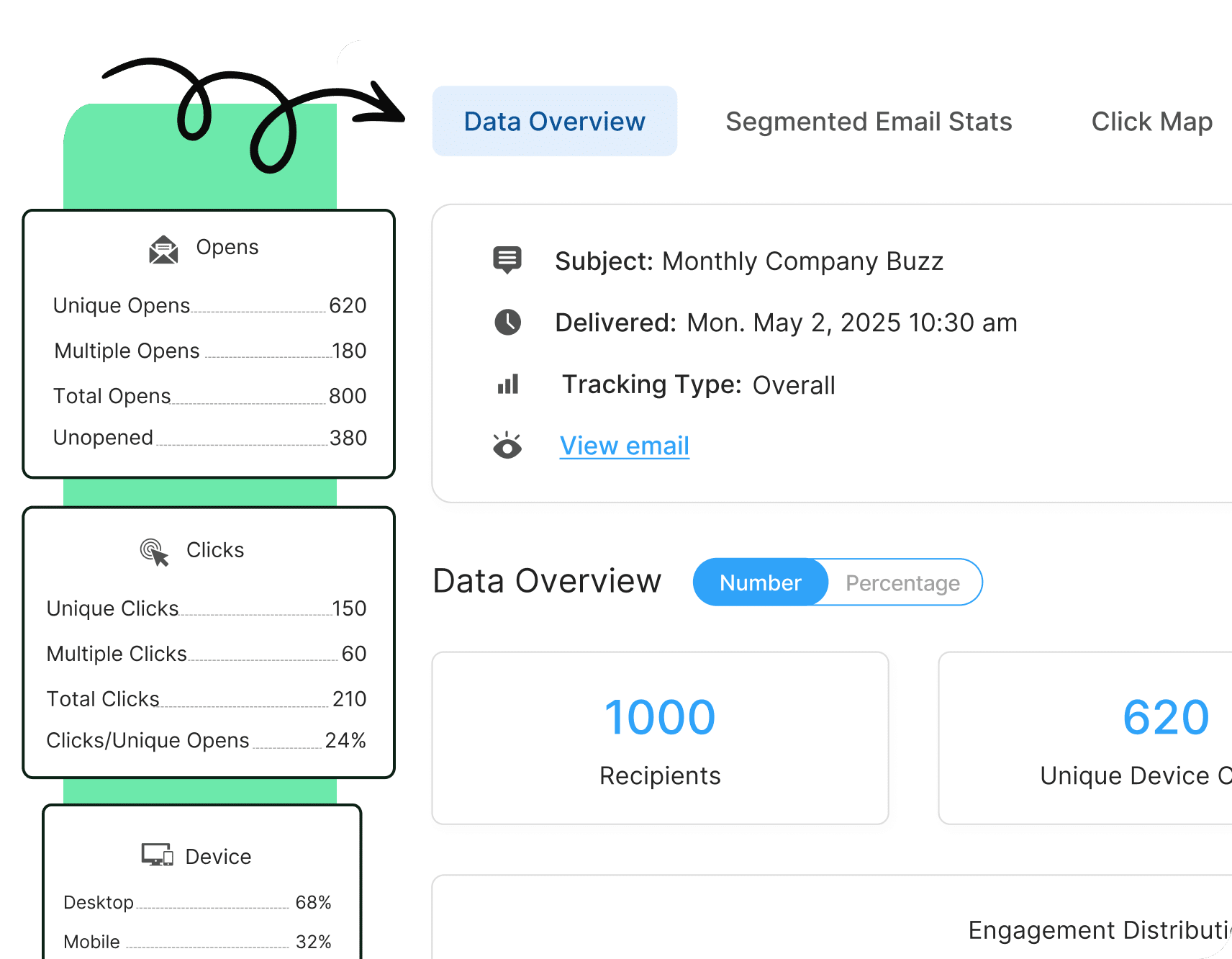
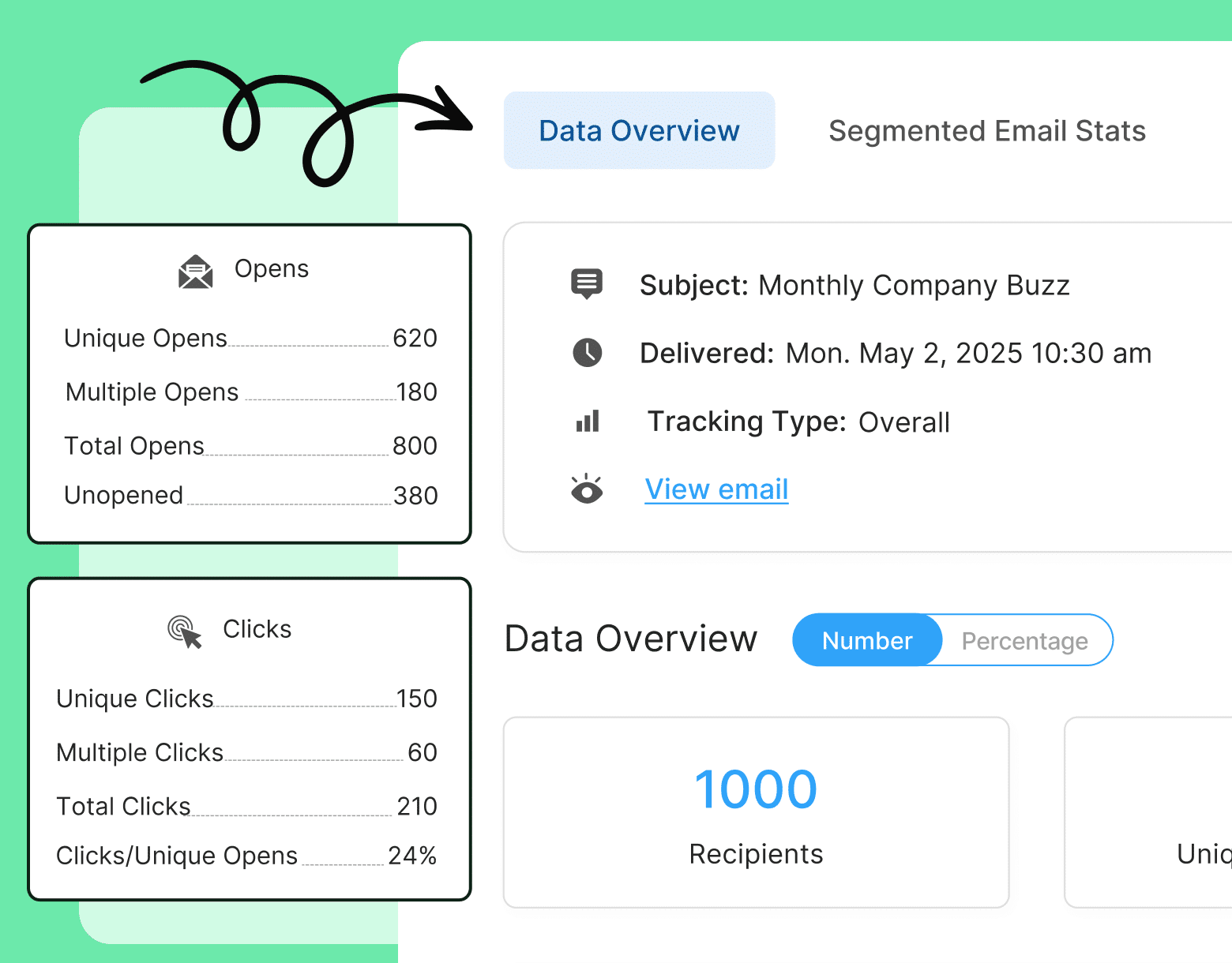
Top Business Use Cases for ContactMonkey
Below, discover the top use cases why this tool is a must-have for any internal communicator looking to improve internal comms and deepen employee engagement.
- Powerful analytics: Through email analytics features, track open rates, click-throughs, and read times to see exactly who’s engaging with your messages. Data-driven insights pinpoint what’s working—and what isn’t—helping you continuously refine your strategy.
- ROI validation: Bring real data to your next leadership meeting, proving the value of your campaigns with concrete metrics. Show exactly how your internal communications boost engagement, reinforce culture, and drive measurable results.
- Dynamic content & internal audience segmentation: Tailor sections of your email based on department, location, or other criteria, through our list management feature and dynamic content. This ensures employee receives content that’s personally relevant to them—without sending separate campaigns.
- Interactive newsletters: Use our drag-and-drop email template builder feature and embedded surveys or polls to spark real employee engagement. Collect feedback in real-time, cut through the noise, and show your workforce that their voices matter— plus, offer multi-language emails, too!
- Personalization at scale: Personalize subject lines, greetings, and content blocks to grab each employee’s attention and make them feel seen. This will increase relevance and connection—even if you’re sending to thousands of recipients.
- On-demand support: Gain access to a dedicated support team who’ll guide you through best practices, troubleshooting, and strategic campaign planning—so you can maximize results without getting stuck in the weeds.
Ready to supercharge your internal comms? Book a FREE demo with ContactMonkey and see firsthand how these features can turn your emails into powerful drivers of employee engagement and organizational success.



